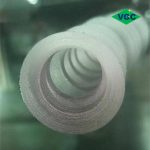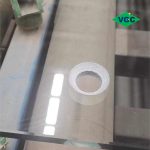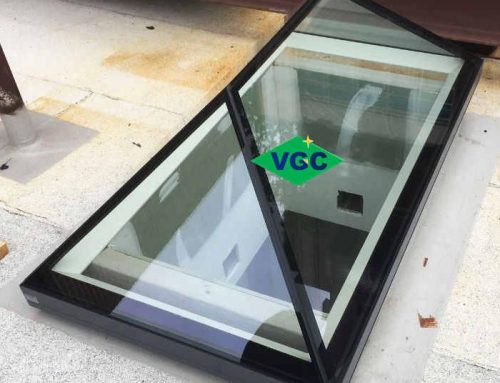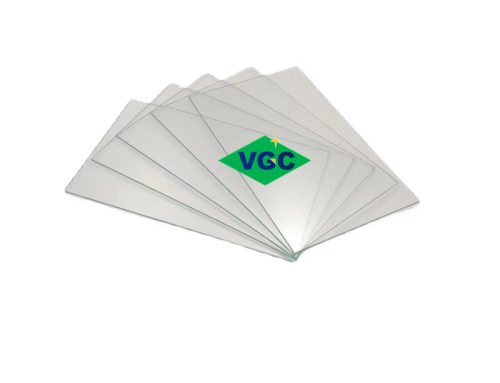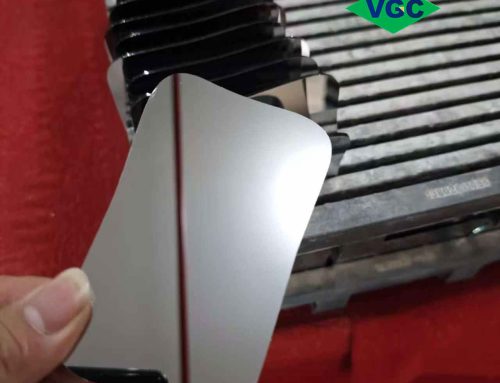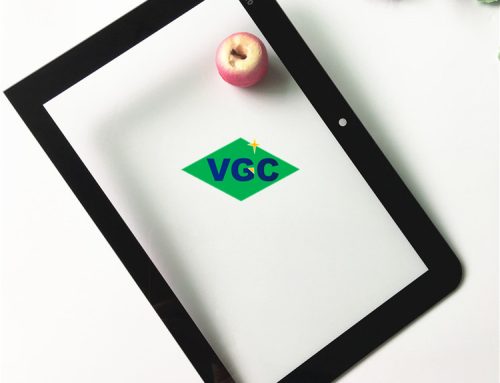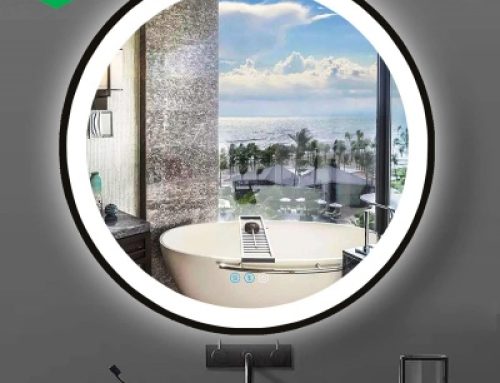1. Introduction
VGC Tempered glass For Padel Court is produced by physical (thermal) tempered glass according to manufacturing processes. Physically (thermally) tempered glass is glass that has undergone a heat treatment process. It is formed by uniformly heating ordinary flat glass sheets in a specially designed heating furnace to 620 ℃, causing them to soften slightly and expand structurally, and then rapidly cooling them with a cold air flow, which is much more safety than common clear float glass.

2. Features of Padel Court Tempered Glass
2.1.Its characteristic is the formation of a compressive stress layer on the surface of the glass, which improves its mechanical strength and thermal shock resistance, and has a special fragmented state;
2.2.Its strength is about 2 to 4 times that of flat glass of the same thickness, and its impact resistance is 3 to 5 times that of ordinary glass. After being broken, it forms particles, which can avoid harm to the human body.
2.3. It is a high-strength safety glass that can be widely used in fields such as outdoor construction.
2.4.The common sizes for Padel Court Wall Glass is 2000mm*3000mm;2995*1995mm,1995*1995mm, and other customized Sizes.
2.5. Padel Courts are usually 20 Meters long by 10 meters wide. Needs 18pcs of standard tempered glass.
2.6. Thickness 10mm and 12mm tempered glass is the best choice for padel court construction.
2.7. Processing includes: Flat polished edges and countersunk holes.
In general use a tempered glass for padel court is more security compared with normal clear float glass, and which is transparent and easy to see the games inside the courts.
2.8. Tempered glass cannot undergo any further cutting, grinding, or other processing or be damaged, otherwise it will break due to the disruption of uniform compressive stress balance. Therefore, various processing should be carried out before tempering.
3. Production Standards (Tempered Glass For Padel Court )
The technical requirements for tempered glass include size and appearance requirements, safety performance requirements, and general performance requirements. The size and appearance requirements include size and allowable deviation requirements, thickness and allowable deviation requirements, appearance quality and curvature; The safety performance requirements (mandatory) include impact resistance, fragment state, and impact resistance of the grenade bag; General performance requirements include surface stress and thermal shock resistance.
3.1. The allowable deviation of the side length of rectangular flat tempered glass should comply with the provisions of Table 1.
| Thickness (mm) | Length L<1000 Tolerance(mm) | Length 1000<L<2000 Tolerance(mm) | Length 2000<L<3000 Tolerance(mm) | L>3000 |
|---|---|---|---|---|
| 3/4/5/6 | +1mm~ -2mm | +/-3mm | +/-4mm | +/-5mm |
| 8/10/12 | +2mm~ -3mm | +/-3mm | +/-4mm | +/-5mm |
| 15 | +/-4mm | +/-4mm | +/-4mm | +/-5mm |
| 19 | +/-5mm | +/-5mm | +/-5mm | +/-7mm |
3.2. The diagonal difference of rectangular flat tempered glass should comply with the provisions.
Thickness: 3/4/5/6
Length <2000mm: +/-3mm
2000mm< Length<3000mm: +/-4mm
Length>3000mm:+/-5mm
Thickness: 8/10/12 (Tempered Glass For Padel Court )
Length <2000mm: +/-4mm
2000mm< Length<3000mm: +/-5mm
Length>3000mm:+/-6mm
Thickness:15/19
Length <2000mm: +/-5mm
2000mm< Length<3000mm: +/-6mm
Length>3000mm:+/-7mm
3.3. The dimensions and allowable deviations of tempered glass of other shapes shall be agreed upon by both the supply and demand parties.
3.4. The shape and quality of edge processing shall be agreed upon by both the supply and demand parties.
3.5. Round hole. The aperture is generally not less than the nominal thickness of the glass, and the allowable deviation of the aperture should comply with the provisions of Table 3.
| Hole D. MM | Tolerance allowed mm |
|---|---|
| 4mm<D<50mm | +/-1.0mm |
| 50mm<D<100mm | +/-2.0mm |
| D>100MM | Negotiated by seller and buyer |
3.6 The curvature of flat tempered glass should not exceed 0.3% when arched and 0.2% when wavy.
3.7 Six pieces of tempered glass are tested for impact resistance. If no more than one piece is damaged, it is considered qualified, and if more than or equal to three pieces are damaged, it is considered unqualified. When the number of damages is 2, another 6 specimens must be taken for testing, and all specimens must not be damaged to be qualified.
3.8 Four glass samples are taken for testing in the fragmented state, and the minimum number of fragments per sample in any 50mmx50mm area must meet the requirements of Table 6. And a small number of elongated fragments are allowed, with a length not exceeding 75mm
3.9 The impact performance of shotgun bags shall be tested on four flat glass specimens, which shall comply with the provisions of either a or b.
a.When glass is broken, the total mass of the maximum 10 fragments per sample shall not exceed the mass equivalent to an area of 65cm2 of the sample, and the length of any glass fragments without penetrating cracks retained in the frame shall not exceed 120mm.
b. When the height of the shotgun bag drops to 1200mm, the sample remains intact
The surface stress of tempered glass should not be less than 90MPa. Using the product as a sample, take 3 samples for testing. If all meet the requirements, it is considered qualified. If 2 samples do not meet the requirements, it is considered unqualified. When 2 samples meet the requirements, add 3 more samples. If all 3 samples meet the requirements, it is considered qualified.
3.10.Tempered glass with heat shock resistance should withstand a temperature difference of 200 ℃ without damage. Take 4 samples for testing, and when all 4 samples meet the requirements, the performance is considered qualified. When there are more than 2 pieces that do not meet the requirements, it is considered unqualified. When one piece does not meet the requirements, add another sample. If it meets the requirements, it is considered that the performance is qualified. When 2 pieces do not meet the requirements, 4 additional samples will be added. If all of them meet the requirements, they will be considered qualified.
4. Disadvantages (Tempered Glass For Padel Court )
Common phenomena of tempered glass for padel court include stress spots and self explosion due to technological issues in the processing of tempered glass.
4.1. Stress spots on tempered glass Padel Court : After tempering treatment, uneven heating and cooling during the tempering process can result in different stress distributions on the glass surface. According to the theory of photoelasticity, the presence of stress in glass can cause birefringence of light, which can be observed through polarized light.
By placing tempered glass under polarized light, the color and brightness changes in different areas of the glass panel can be observed. This is what people generally refer to as stress spots on tempered glass. There is a certain amount of polarized light in sunlight, which is influenced by weather and the angle of incidence of sunlight. By using polarized glasses or observing tempered glass at a larger angle perpendicular to the glass, the stress spots on the tempered glass will be more pronounced.
4.2.The self explosion of tempered glass is caused by the presence of tiny nickel sulfide stones in the glass. After heat treatment, some of the stones will undergo crystalline changes over time, increase in volume, and cause micro cracks inside the glass, which may lead to the self explosion of tempered glass. The obvious feature of self explosion of tempered glass is that if the self explosion glass is still on the frame, a butterfly like pattern can be seen, and under the microscope or light reflection, impurities at the center of the explosion can be seen, radiating outwards around the butterfly pattern to present cracks and fractures. Tempered glass self destructs as shown in the following figure.
5. Solution of Tempered Glass For Padel Court
There are several common methods to reduce the self explosion of tempered glass for tempered glass for padel court , including:
5.1. using raw materials with less nickel sulfide stones, that is, using high-quality raw materials.
5.2. Avoid excessive stress on tempered glass.
5.3. Tempered glass undergoes a second heat treatment, commonly known as detonation or homogenization treatment.
5.4. Using ultra white tempered glass for padel court . Ultra white glass is a type of ultra transparent low iron glass. During the iron removal and acid washing process in the production process, impurities such as sulfur-containing nickel that cause the glass to self destruct can be removed, greatly reducing the probability of glass self destruct. In practical engineering, ultra white glass is easily identifiable and widely used.
- Tempered Glass For Padel Court
- Tempered Glass For Padel Court
- Tempered Glass For Padel Court

